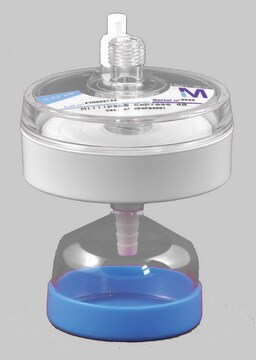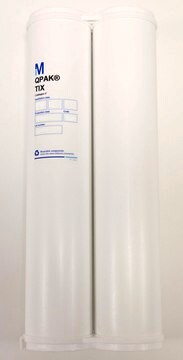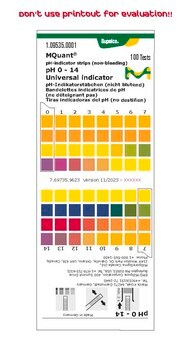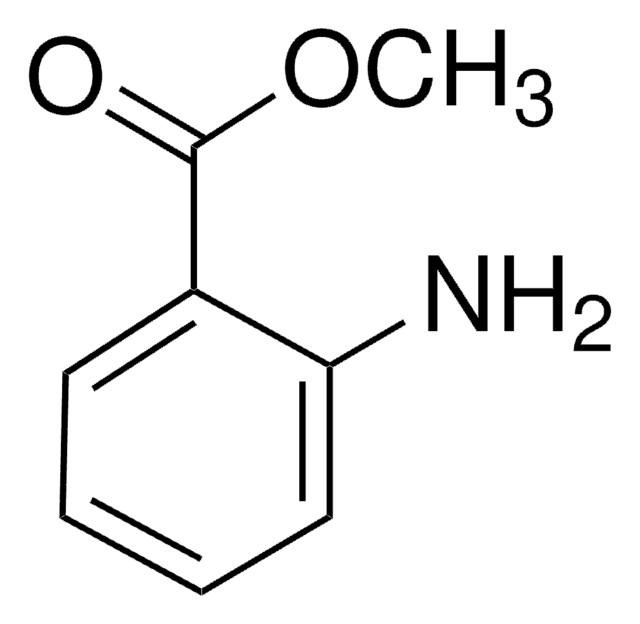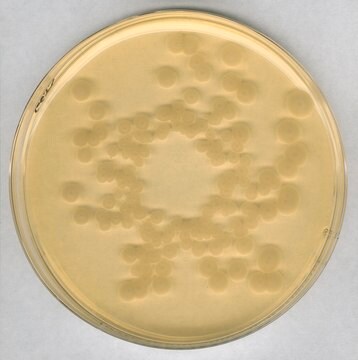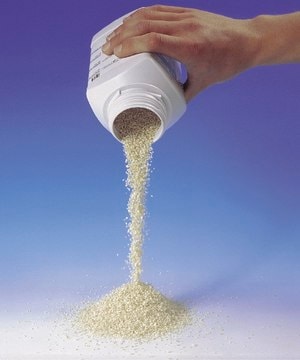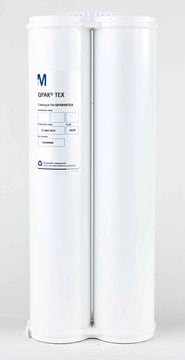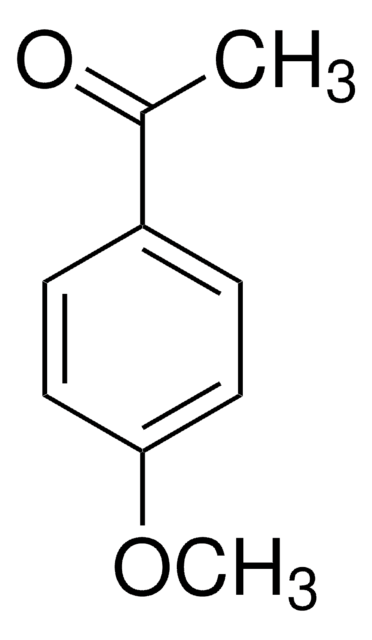Wichtige Dokumente
W269905
6-Methylcumarin
≥99%, FCC, FG
Synonym(e):
6-methylchromen-2-one, Cocodescol, Pralina, Toncair, Toncarine
About This Item
Empfohlene Produkte
Biologische Quelle
synthetic
Qualitätsniveau
Qualität
FG
Halal
Kosher
Agentur
meets purity specifications of JECFA
Einhaltung gesetzlicher Vorschriften
EU Regulation 1334/2008 & 178/2002
FCC
Assay
≥99%
bp
303 °C/725 mmHg (lit.)
mp (Schmelzpunkt)
73-76 °C (lit.)
Anwendung(en)
flavors and fragrances
Dokumentation
see Safety & Documentation for available documents
Nahrungsmittelallergen
no known allergens
Organoleptisch
coconut; creamy; sage; vanilla
SMILES String
Cc1ccc2OC(=O)C=Cc2c1
InChI
1S/C10H8O2/c1-7-2-4-9-8(6-7)3-5-10(11)12-9/h2-6H,1H3
InChIKey
FXFYOPQLGGEACP-UHFFFAOYSA-N
Suchen Sie nach ähnlichen Produkten? Aufrufen Leitfaden zum Produktvergleich
Verwandte Kategorien
Anwendung
- Development of Sustainable Insecticide Candidates for Protecting Pollinators: Insight into the Bioactivities, Selective Mechanism of Action and QSAR of Natural Coumarin Derivatives against Aphids.: This study explores the potential of 6-Methylcoumarin and other natural coumarin derivatives as sustainable insecticides, highlighting their bioactivities and selective mechanism of action. The research aims to protect pollinators while targeting aphids, providing a promising alternative to conventional pesticides (Zhou et al., 2023).
- Conductive Vial Electromembrane Extraction of Opioids from Oral Fluid.: This research presents a novel method using conductive vial electromembrane extraction for isolating opioids from oral fluid. While the primary focus is on opioids, the study utilizes 6-Methylcoumarin as a key component in the extraction process, showcasing its versatility in analytical chemistry applications (Skaalvik et al., 2023).
- 6-Methylcoumarin Promotes Melanogenesis through the PKA/CREB, MAPK, AKT/PI3K, and GSK3β/β-Catenin Signaling Pathways.: This article investigates the role of 6-Methylcoumarin in promoting melanogenesis, detailing the molecular pathways involved. The findings suggest potential applications in dermatology and cosmetic science, particularly in skin pigmentation treatments (Kim et al., 2023).
- Recursively Positive and Negative Chemotaxis Coupling with Reaction Kinetics in Self-Organized Inanimate Motion.: This research delves into the chemotactic behavior of inanimate particles, using 6-Methylcoumarin in the reaction kinetics studies. The study contributes to the understanding of self-organizing systems, with implications for material science and biophysics (Matsuo et al., 2023).
Biochem./physiol. Wirkung
Signalwort
Danger
H-Sätze
Gefahreneinstufungen
Acute Tox. 4 Oral - Resp. Sens. 1 - Skin Sens. 1
Lagerklassenschlüssel
11 - Combustible Solids
WGK
WGK 3
Flammpunkt (°F)
Not applicable
Flammpunkt (°C)
Not applicable
Persönliche Schutzausrüstung
dust mask type N95 (US), Eyeshields, Faceshields, Gloves
Hier finden Sie alle aktuellen Versionen:
Besitzen Sie dieses Produkt bereits?
In der Dokumentenbibliothek finden Sie die Dokumentation zu den Produkten, die Sie kürzlich erworben haben.
Kunden haben sich ebenfalls angesehen
Global Trade Item Number
| SKU | GTIN |
|---|---|
| W269905-100G | |
| W269905-5KG-K | 4061834396871 |
| W269905-SAMPLE-K | 4061837516085 |
| W269905-100G-K | 4061834396864 |
| W269905-1KG | |
| W269905-1KG-K | 4061835565894 |
| W269905-5KG | |
| W269905-SAMPLE |
Unser Team von Wissenschaftlern verfügt über Erfahrung in allen Forschungsbereichen einschließlich Life Science, Materialwissenschaften, chemischer Synthese, Chromatographie, Analytik und vielen mehr..
Setzen Sie sich mit dem technischen Dienst in Verbindung.